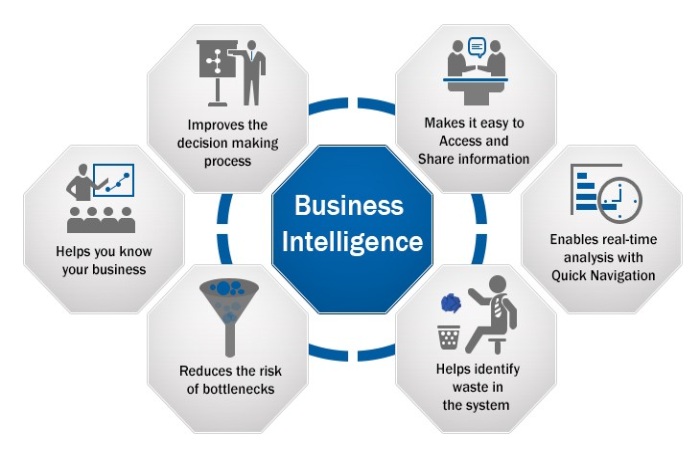Table of Contents
Introduction
Business intelligence software is a tool or application equipped with modern technologies, such as AI and ML, that help you turn data into actionable insights without spending a lot of effort. The BI tool turns raw data into meaningful information in a way that you can know, use, and share to improve your business operations.
Who Should use Business Intelligence Software?

BI software can be used by someone who requests to evaluate data. However, the administrative side of an organization uses it the most. From managers to CEOs and company founders, BI software helps users make informed decisions based on data.
Small and Medium Business Intelligence Software
Firstly, There was a period when BI software was classy and only used by large companies. But Cloud Business intelligence software (BI) software solutions are affordable for today’s small and medium-sized businesses (SMBs). SMBs are increasingly taking advantage of this fact and using cloud-based BI solutions
Large Companies – Business Intelligence Software
As the maxim goes, “data is the new oil.” Large companies use Business Intelligence (BI) analytics software to extract and analyze data from their applications and databases continuously.
Sales – Business Intelligence Software
How does the sales pipeline look for the next few months? Who are my best and worst employees? What regions and products should I focus on to maximize my profits? Sales managers can answer these questions through sales analysis using BI software solutions.
Marketing
Marketers run many marketing campaigns across many channels. How effective are each of these campaigns? What are the marketing metrics, such as visitor page views for sign-ups, top five performing regions, products, and services? These are all questions marketers want to be answered. Find answers to these questions with selling analytics
Finance
Beyond the stability sheet, cash flow, and profit and loss statements, savvy financial professionals are now asking deep questions about their financial data down to the CFO level. Because Financial analysis provides insightful answers to these questions.
Human Resources and Recruitment
However, HR managers need to know the number of people hired, those who exit the body, effective workforce utilization, productivity trends, and also more. In addition, recruitment agencies should monitor metrics such as average time to fill positions, selection rate, cost incurred per hire, bid acceptance rate, and effective sourcing funnels.
Project Management
However, Project managers need to track television tasks, time sheets, and billing information to measure whether ROI is effective. With project management analytics, it’s easy to follow these metrics and ensure your project is on track.
Operations
Operating or administrative expenses are essential to any organization’s balance sheet. Therefore, CFOs should constantly monitor administrative costs, as any leakage here will affect business performance.
How to Choose the Right Business Intelligence Software Tools?
Here are about things to consider when looking for the best business intelligence software:
- Check if the software has no-code capabilities: Making data for analysis is one of the most critical tasks for obtaining accurate results. Preparation involves filtering the data, structuring it, or classifying it into different groups. A BI tool with no-code skills makes this step much easier, as little to no technical knowledge is required. So if you or your teammates have a non-technical background, go with a BI tool without code capabilities.
- Look for tools that support most data integration options – your data may be spread across multiple systems. Social media stages, CRM tools, and ERP solutions are examples of where data can reside. So please take a close look at where all your data is distributed and look for BI tools that can extract and analyze your big data from all its sources. And also
- Firstly, Unique software with maximum visualization tools: Visualization tools make complex data easier to read and understand. Some examples of display options are column charts, line charts, pie charts, and stacked bar charts. Choose a tool that provides maximum data visualization tools, as this will allow you to find the best method.
Conclusion
Business Intelligence Software Benefits Although there is always some risk in business, BI reporting tools help minimize this risk. By providing hyper-accurate reports in real-time and assisting organizations to understand detailed information better, BI helps eliminate the need for guesswork.

